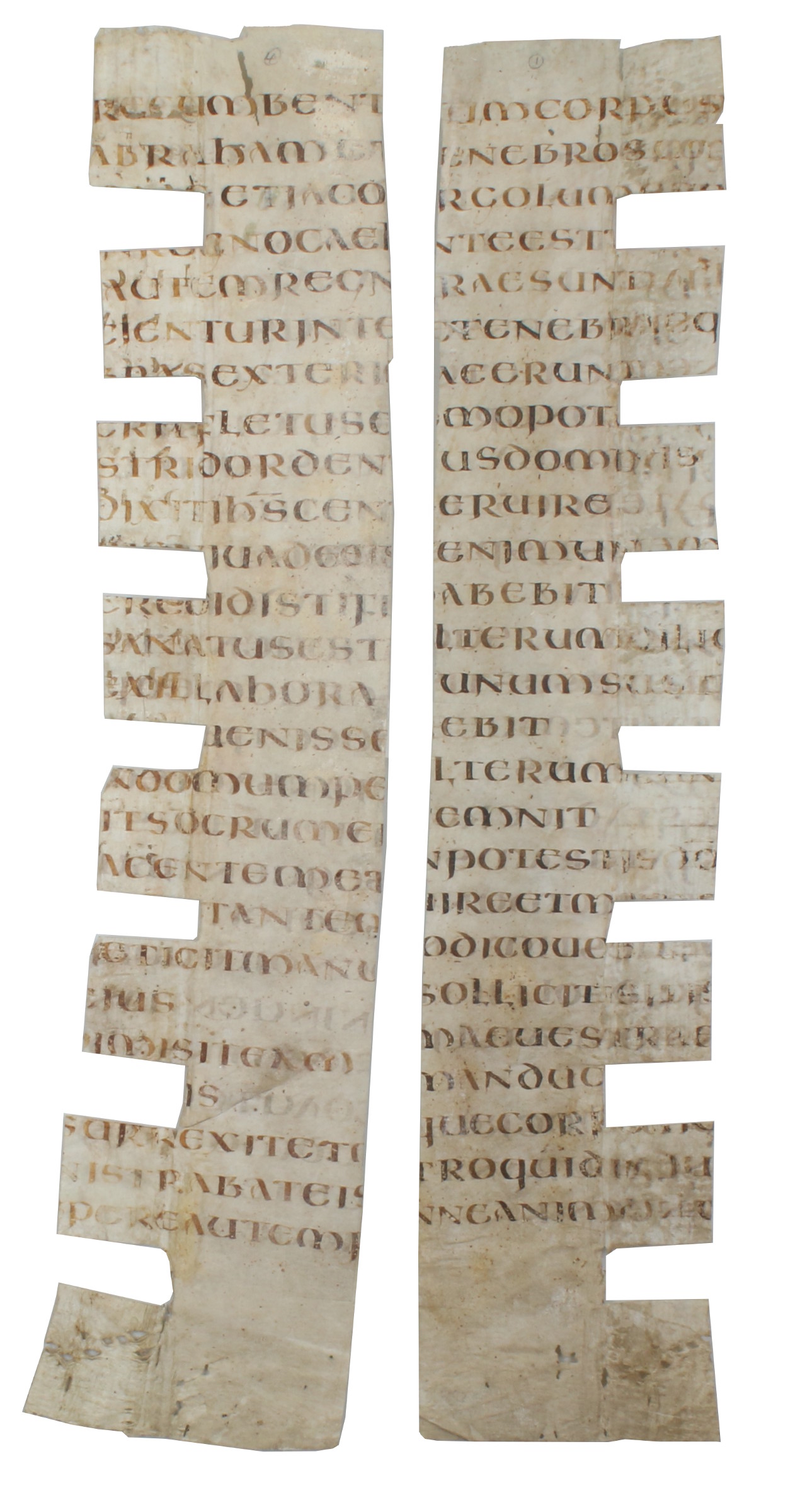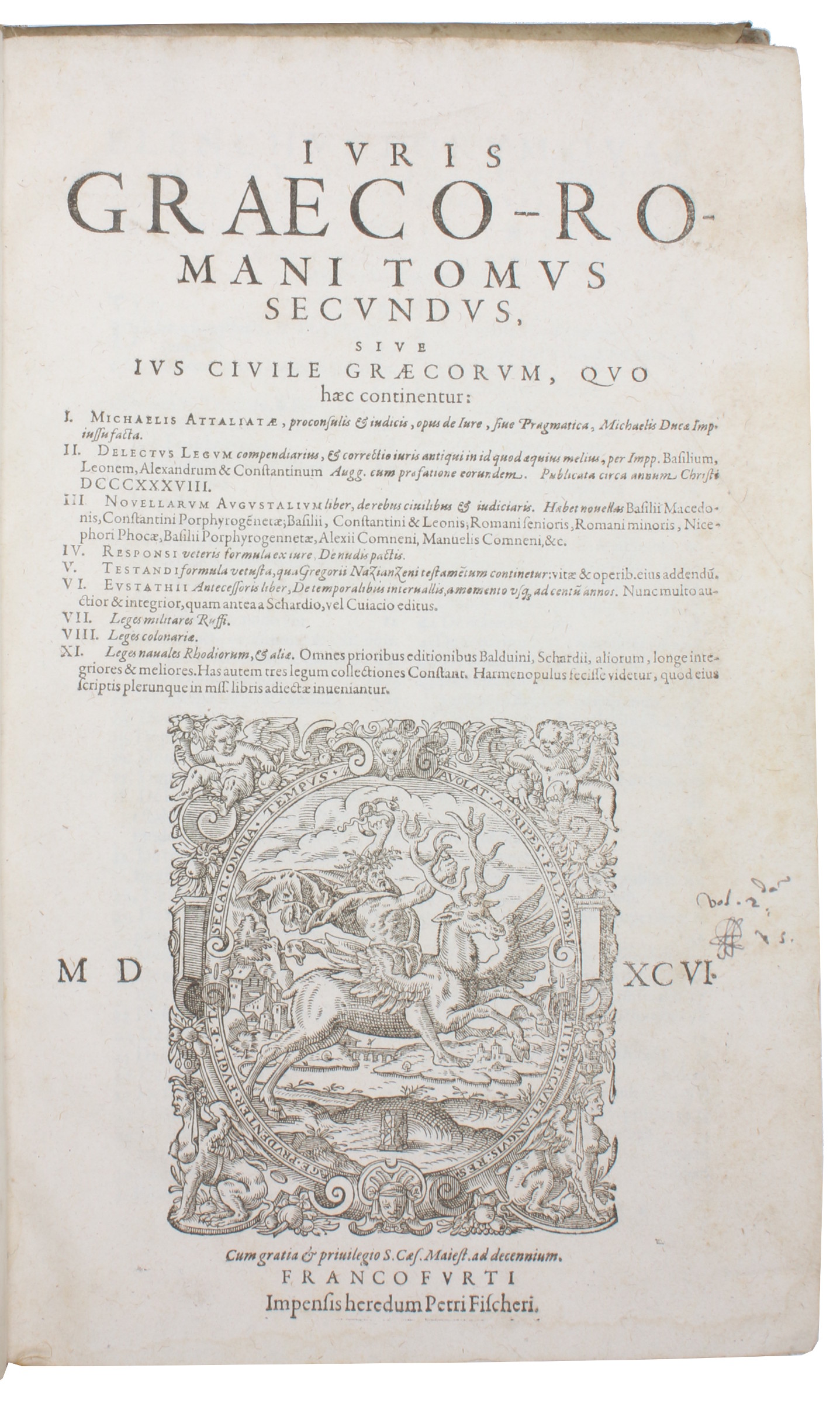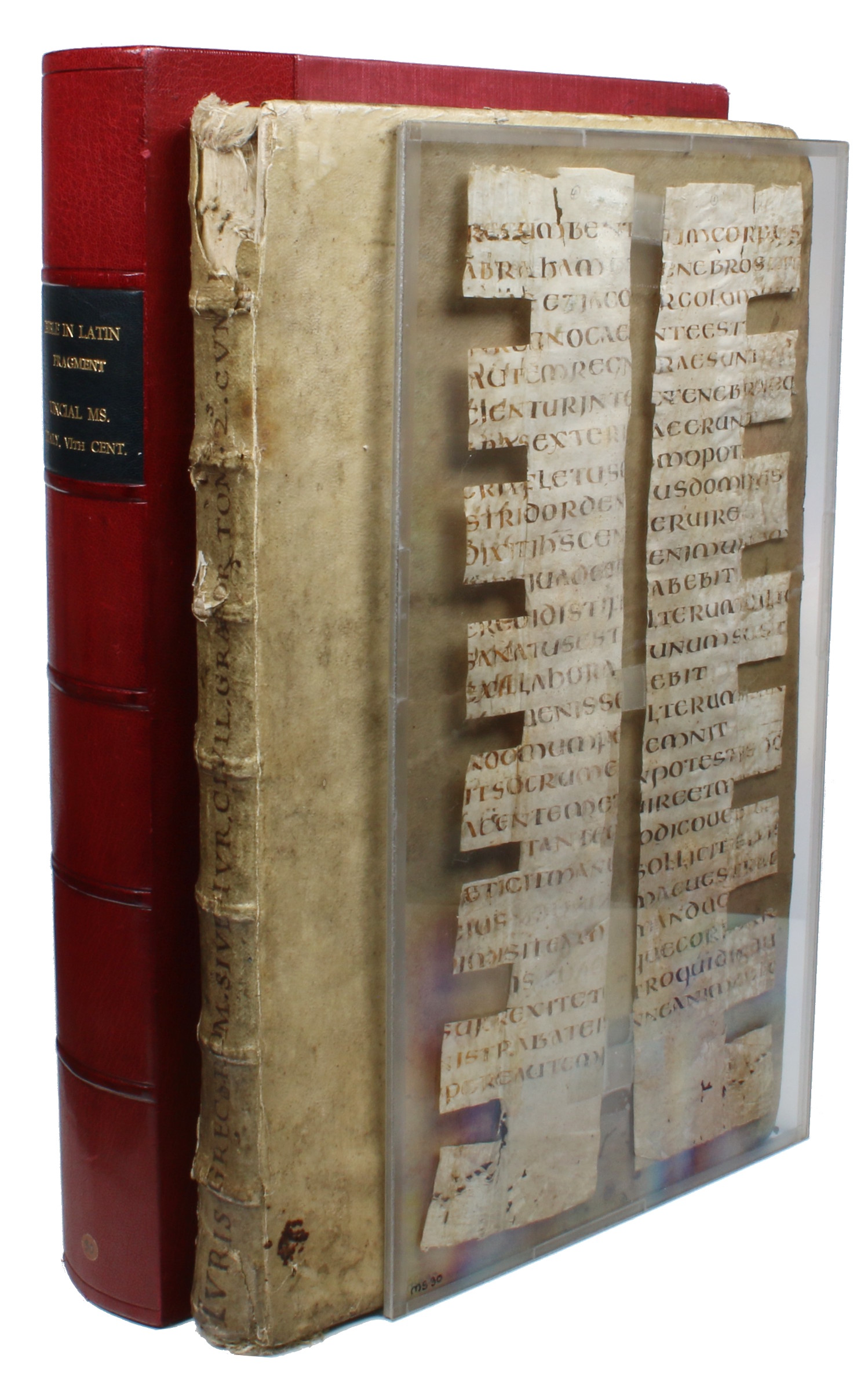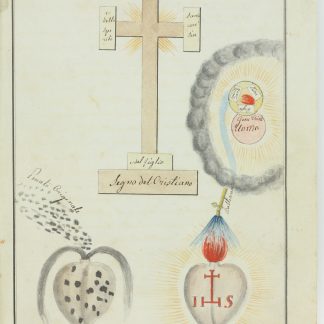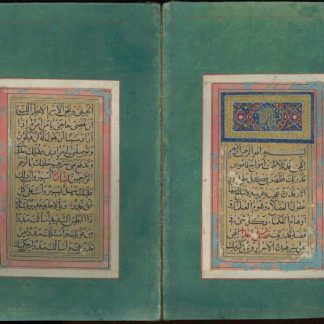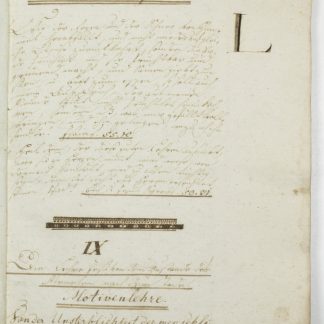Probably the fourth or fifth oldest witness to the Gospel of Matthew in the text of the Latin Vulgate
Sixth century uncial fragment of the Vulgate, Matthew 6.22-28, 8.8-16.
Latin manuscript on vellum. 2 partial leaves: vertical strips, each from a full column height, 310 x 65 and 304 x 63 mm (originally ca. 320 x 260 mm), 1 of 2 columns (250 x 70 mm, originally ca. 252 x 240 mm), left-hand edges cropped and crenellated with 7 rectangles removed to fit around the 7 sewing-stations of a binding. 26 well-spaced lines in a "regular stately uncial" (Lowe), the bow of 'A' attenuated and pointed, upper bow of 'B' forming a small triangle, the hasta of 'E' high, no word division, laid out "per cola et commata". Some rubbing and creasing, with minor stains and other wear, stored between perspex. The only survival of a Gospel book once comprising ca. 200 ff. Recovered from the inside spine of the binding of: Joannes Leunclavius, Jus Graeco-Romanus, tomus II. Frankfurt/Main, Peter Fischer's heirs, 1596. In its original German binding of vellum over boards, sewn on seven double cords. Book and vellum strips stored together in a quarter red morocco fitted case gilt [by Nello Nanni, New York] (ca. 1974).
Two fragments forming one of the earliest known Vulgate manuscripts for the Gospel of St Matthew, probably the fourth or fifth oldest, written only two centuries after St Jerome had prepared the Vulgate New Testament, from the original Greek, at the commission of Pope Damasus I.
Early copies of the Vulgate translation are surprisingly rare: the oldest fragments of the Latin Vulgate in North America both date only from the late 7th or early 8th century (Yale, Beinecke, MS 440: pieces of Mark; Indiana University, Lilly, MS Poole 65: a tiny fragment of Luke). Of the ten oldest surviving manuscripts which include even small parts of Matthew's Gospel in the Latin Vulgate, dating from the early 5th to the early 7th century, all but the present example are in institutional collections. All earlier manuscripts and Latin Gospel fragments are either of the archaic Old Latin text or are tiny fragments which no longer include any part of Matthew's Gospel. E. A. Lowe drew attention to the "marked similarity" between the present pieces and the manuscript in the Archivio capitolare of Ancona (101 leaves remaining), which is reputedly and credibly associated with St Marcellinus, bishop of Ancona 550 - ca. 566. Both manuscripts probably date from the middle third of the 6th century; they are older than any complete Vulgate Gospel Book extant and about a century and a half earlier than even the Codex Amiatinus, the most important primary source for Jerome's text.
The texts here are from Matthew 6 and 8: piece (a) recto, from "[tot]um corpus ..." (Matthew 6:23) to "...[no]nne anima plu[s]" (6:25), and verso, from "quam esca ..." (Matthew 6:25) to "...[no]n laborant [nequ]e nent" (6:28); piece (b) recto, from "[dignus] ut intres ..." (Matthew 8:8) to "...occid[en]te venient" (8:11), and verso, from "[e]t recumbent ..." (Matthew 8:11) to "...[ve]spere autem f[acto]". This includes the text of Christ's injunction not to serve both God and mammon, culminating in 'Consider the lilies of the field' (verse 28), and, in the next piece, the healing of the centurion's servant. At Matthew 8:13, a line of dots under the 'h' or 'hora' changes the reading to 'ora' (cured in 'the mouth'), a variant without authority.
Like many of the earliest Biblical manuscripts, the text is laid out "per cola et commata", in short sense breaks for reading aloud a breath at a time. There is no word division. The strips are both from the outer columns of a 2-column manuscript; one leaf separated the two.
The contemporary binding of the "Jus Graeco-Romanum", from which the strips are removed, is clearly continental, in simple plain vellum over pasteboards, and it is most probable that the Gospel manuscript was cut up by a bookbinder in or near Frankfurt between 1595 and 1614-15, when the book's first documented owner, Lord Herbert (1583-1648), visited Germany. An obsolete 6th-century Gospel Book could have reached the Rhineland by any route in the previous 900 years, but the simplest explanation is that it had arrived with the first Christian missionaries to Germany, who came not directly from Italy but from England. In the late 6th and 7th centuries, uncial texts of the Vulgate Scriptures had first been brought to Britain by Italians such as St Augustine of Canterbury, who was furnished with manuscripts by Gregory the Great (Pope 590-604), and St Benedict Biscop, who probably acquired part of the biblical library of Cassiodorus (d. ca. 585). In the 7th and early 8th centuries, many of these same manuscripts, by that time of less value, were then taken back across the Channel to Germany by St Willibrord (d. 739), St Boniface (d. 754), and other Anglo-Saxon missionaries, establishing Christianity in the Rhineland, Fulda, Mainz, Eichstätt, Würzburg, and elsewhere, all in the region of Frankfurt.
Used as sewing-guards in the contemporary binding of J. Leunclavius, Jus Graeco-Romanum, vol. II (Frankfurt, 1595), bought for 5 shillings by the philosopher and historian Edward Herbert (1583-1648), 1st Baron Herbert of Cherbury, perhaps during his continental journey of 1614-15 to Cologne and up the Rhine, and bearing his autograph monogram. Part of Lord Herbert's library was bequeathed to Jesus College, Oxford. The residue, including the present item, remained in the possession of his descendants at Powis Castle, central Wales, until 1952, when the castle was bequeathed to the National Trust by the 4th Earl of Powis. The volume in question was consigned to Sotheby's by Edward Herbert (1889-1974), 5th Earl of Powis, and was sold to H. P. Kraus on 10 July 1967 (lot 20). It was offered by Kraus as no. 2 in his Monumenta Codicum Manu Scriptorum (1974) and was bought by Martin Schøyen in 1987. Now Schoyen MS 30, it was subsequently de-accessioned and again sold through Sotheby's on 10 July 2012 (lot 14: £265,250), last residing in a French private collection.
Schøyen MS 30. E. A. Lowe, Codices Latini Antiquiores, Supplement (1971), p. 37, no. 1801. B. Bischoff, V. Brown, J. John, "Addenda to Codices Latini Antiquiores", Mediaeval Studies 54 (1992), p. 307. TM 67927 / LDAB 9198.

